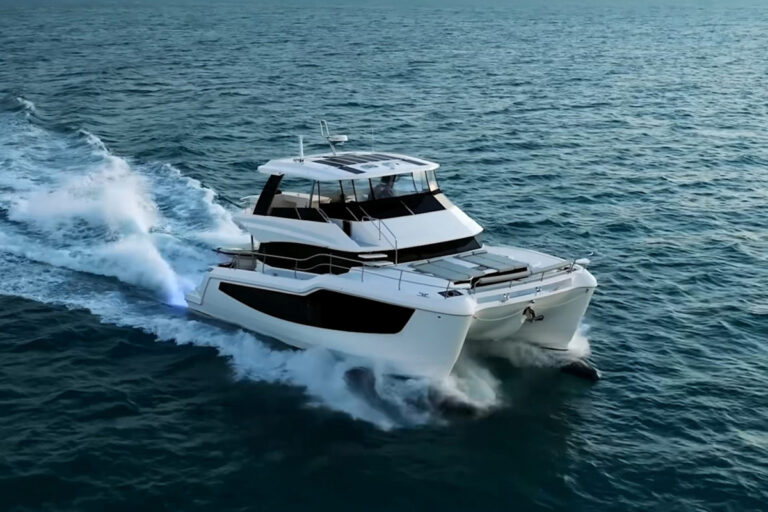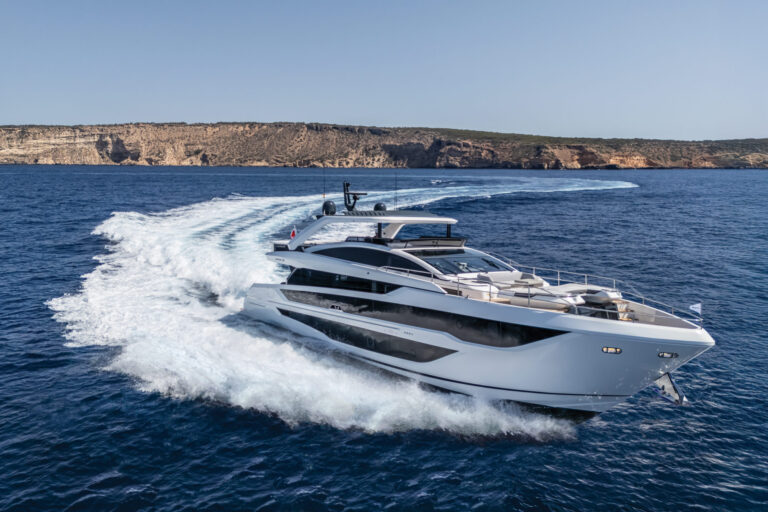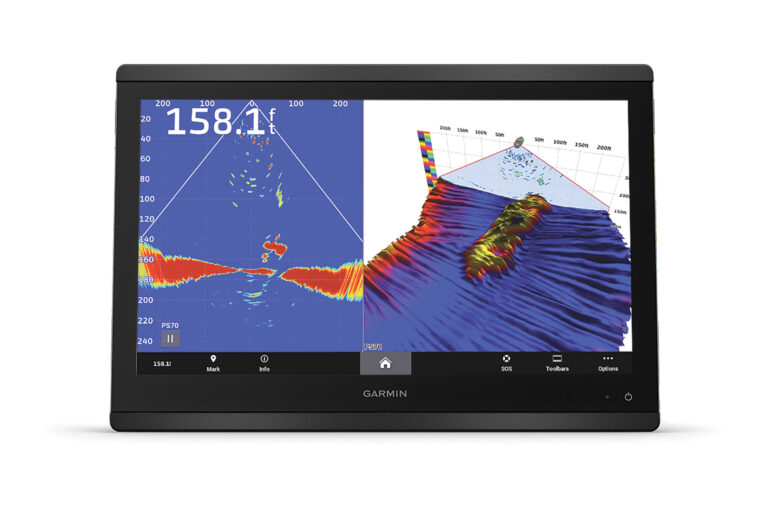Let us now praise consumer electronics-the iPod, Palm Pilot, the computer and even the not-so-lowly TV set. Why? Because while virtually everything else in yachting becomes more costly, marine electronics consistently provide more value for your money, in large measure due to the use of the billions of dollars invested in consumer product technology.
With the exception of basic sensors such as sonar, microwave antennas and the initial stages of radar data processing, virtually every other marine device is the result of creative application of technology and components developed for the landlubber crowd-in order to better channel the likes of Britney Spears. And so it is that this year’s trends in marine electronics can also be traced to new consumer electronics, a trend that will accelerate with the continued development and mass production of components required for more powerful computers and large screen LCD and HDTV sets.
Here’s an example of how it will affect you. Today, almost every piece of equipment uses an LCD screen. The months ahead will see a continuing transition from monochrome to color LCDs, usually with an increased pixel count and improved contrast ratio. Displays will be more readable from off-center angles, when wearing polarized sunglasses and in direct sunlight. The current increased production and accompanying reduction in the cost of large LCDs (13-inch and larger, measured on the diagonal) for TV and computer monitors will reduce the cost of displays used below deck. Screens with sufficient contrast, brightness and environmental protection for use on the bridge will, as today, command a premium price. LCDs used in the most challenging viewing conditions will continue to be expensive, often costing more than the remainder of the system whose data they display.
A major and likely very significant improvement in display-screen technology can already be seen in a few consumer products. The screens used in the new Kodak EasyShare LS633 digital camera, a number of PDAs and cell phones and on the dashboard of the Chevrolet Corvette and Aston-Martin DB9 are not LCDs. They are Organic Light Emitting Diode (OLED) screens and operate very differently from LCDs. They produce a high-contrast ratio, bright-color image that can be viewed from virtually any angle (±90 degrees, both horizontal and vertical) without color or contrast change, and since they don’t incorporate a polarizing screen, they can be seen clearly when wearing polarized sunglasses. The OLED screen resembles a color CRT in that each pixel emits light, whereas in an LCD each pixel acts as an electronic shutter to block light. OLED screens are superior to LCDs when presenting rapidly changing information such as video images, can be thinner and may consume less power due to the elimination of the backlight required to illuminate the LCD screen.
The first OLEDs to reach the market are small-Samsung has introduced a prototype 21-inch TV display and their efforts are paralleled by efforts at Sony and LG Phillips. As with any new technology time will be needed to solve problems, especially in mass production of large-size screens, yet the attributes of the OLED are attracting the investment capital needed to make them a major force in the consumer electronics market.
Two contrasting trends are evident in the packaging of marine electronics. Compact, multifunction, essentially self-contained products such as WAAS/GPS Chart Plotters with integral sonar/fishfinder displays and fuel flow/fuel economy optimization capability will proliferate. Virtually any electronic device needed for navigation of a boat will be available in a small bracket- or panel-mounted unit, often at a surprisingly low cost. There will be no problem in duplicating the functionality of a large yacht’s electronics suite on a center console fishing boat.
Equipment for the yacht market will increasingly rely on the “black box” approach that separates signal processing and number crunching from the control and display functions. All of the data management, processing and supporting memory will be housed in the remote box that serves as the system’s hub. Ethernet will continue to displace the numerous and incompatible proprietary communication bus protocols developed over the years by various equipment manufacturers. NMEA 0183 will continue in use for some time to ensure compatibility with already-installed equipment. NMEA 2000 will see some use in this area, but it is better suited to less demanding communication channels.
Wireless networks, primarily based on one of the “Wi-Fi” standards (for example IEEE 802.11g) will replace wired connections, a change that will simultaneously increase the opportunity to install additional equipment throughout a yacht while drastically reducing the cost of the installation. Bluetooth will be used for short-range wireless applications such as radio microphones and handsets. Some sensors such as masthead wind velocity sensors will likely use wireless transmission and be solar powered with internal energy storage cells or capacitors providing power during darkness.
While complex systems installed on large yachts will continue to be largely custom designed, manufacturers are striving to provide very comprehensive true plug-and-play product groups that can be used to satisfy even the most demanding requirements. The Raymarine H-6 and Furuno’s NavNet and NavNet 2 systems are excellent examples of this approach.
Complexity will prove to be the dark side of innovation. The user’s control interface, a critical factor in the usability of any device, will continue to employ a combination of dedicated keys and knobs plus a variety of mouse or trackball selected on-screen menus. Some systems, such as the Furuno FAR-21X7-BB Series Radar and the MapTech i3 offer both, while others will use a combination of dedicated controls and “soft” keys. There is a need for the designers of the more complex marine electronic products to provide a “graceful” way for an inexperienced user to operate the equipment in a basic, useful mode. Although the captain of the yacht may be thoroughly familiar with the multitude of control and menu choices, his guest and fellow yachtsman may not be that well acquainted with the vessel’s 16-function-does-everything master navigation system. It’s important that someone who has not gone to school on the system be able to safely spell the master at the helm. At the bottom line it may be necessary to rein in the programmers, who, given increasing amounts of memory and ever-faster processors, delight in making the dog do ever more tricks.
While purpose-built marine electronics will continue to predominate, navigation systems operating on PCs and now on the latest OS-X Macintosh computers, will be used by many mariners, especially for chart-table planning and for the collection of unlimited amounts of track data while under way. The ability of some of these systems to construct a total picture of vessel operation is particularly impressive. It will be very interesting to see what happens when someone assembles a system comprised of the new Mini Macintosh computer, a remote sunlight readable display, a wireless keyboard or mouse and a software package optimized for the Mac’s Unix-based operating system.
The availability of faster, less costly microprocessors and memory is already improving the performance of chart plotters, radar and fishfinders. It will no longer be necessary to invent shorthand and easily forgotten names to waypoints in order to keep within the arbitrary character allowance provided in the charting program. Chart plotters will be able to deal with both raster and vector charts and will ideally be capable of using vector products from multiple vendors, allowing the user to choose the best cartography for each area visited.
Comprehensive vessel-power management/indicating and data-recording systems now mostly found on large yachts will become more popular as their price is reduced. Their use will have a positive impact on instrument-panel design by encouraging the placement of primary navigation displays where they belong-at the center of the helmsman’s field of vision.
The equipment we see and use during the coming year or two will be very familiar in appearance, however it will be easier to use, more capable, more reliable, easier to install and likely offer greater value for the money than what is now on your boat or available on the store shelves.
POWER POINTS
The months ahead will see: · a continuing transition from monochrome to color LCDs; · very significant improvement in display-screen technology and battery management via OLED screens; · continuing advances in fitting large-yacht electronics suites on small, i.e., center console boats; · the yacht market increasingly rely on the “black box” approach that separates signal processing and number crunching from the control and display functions; · wireless networks replace wired connections; · the user’s control interface become so complex that the need will arise for “simplifying” devices or modes so that nonexperts can operate equipment; · Macintosh OS-X computers increasingly used for marine functions such as chart-table planning and data collection while under way; · faster, less costly microprocessors improve performance of most electronics; · comprehensive vessel-power management systems become more popular, affordable.








